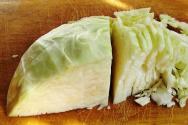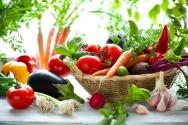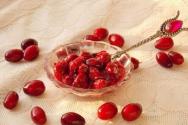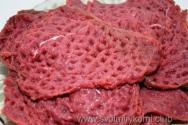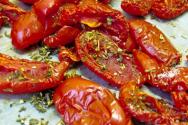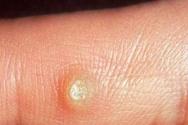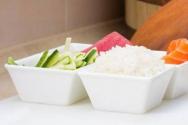What wine goes with what dish? What drinks to serve with different dishes
How to choose wine and what to serve with dishes for a festive dinner? Most of us know the general rule: white wine goes with white meat and fish, and red wine goes with red meat. And if there are a lot of guests, then it is better to serve both - who likes what. However, such simple rules are hardly suitable for true gourmets. After all, wine largely determines how tasty the dishes you serve will be. Wine not only accompanies food, it helps to correctly place flavor accents.
With the basics of wine selection as a guide, you can experiment to find the best choice. correct combinations wines with your favorite dishes. These recommendations will not only guide you on how to choose a wine for which dish, which wine is best suited, but also how to serve the wine correctly, in what container and at what temperature. So let's look at these rules.
Rule of time
Firstly, pay attention to the time of year and the temperature outside the window. During the hot season, we should recommend those wines that quench your thirst well and have a pleasant “freshness”. Dry white table wines are distinguished by these qualities.
In winter, they prefer “warm”, well-warming red table and strong grape wines. The especially widespread use of wines of these brands in winter is also explained by the fact that the winter menu contains more hearty and “dense” dishes from meat, pork, and lamb, which go well with both red table wines and strong grape wines.
Secondly, when deciding which wine to serve with which dish, you need to follow the rule: Each dish is served with its own wine.
At the beginning of lunch or dinner, drinks that stimulate the appetite are served - aperitifs. These can be quite strong drinks, of the “you can’t drink much” type, or, on the contrary, the lightest wines that go well with light snacks. Such wines include sherry and Madeira; Both of these drinks lack the primitive and harsh taste of vodka and have a delicate aroma.
Dry white grape wines can be offered with hot fish dishes. Of the domestic and post-Soviet wines, the Rieslings “Abrau”, “Anapa”, “Su-Psekh”, “Alkadar” and Georgian wines No. 1 “Tsinandali”, No. 3 “Gurjaani” are especially recommended for these dishes... To the second meat dishes They recommend dry red grape wines, especially the following brands: Georgian red table No. 2 “Teliani”, No. 4 “Mukuzani”, No. 5 “Saperavi”, No. 10 “Stolovoe” and “Cabernet” (Moldavian or Ukrainian).
And finally, dessert. For sweet dishes they offer dessert Muscats and Tokai Pinot Gris, all brands of Cahors. Sweet varieties of champagne are recommended for fruits, ice cream, and ice cream. For champagne served outside of lunch or dinner, it is recommended to serve various cheeses, as well as dry cookies, pastries, cakes, sweets, candies, fruits, nuts, pistachios, and fried salted almonds.
Champagne (sweet only), in its quality and aroma, is one of those rare wines that can accompany dishes of different tastes (but, of course, not spicy snacks). This drink can be recommended for a festive dinner or lunch - instead of all other wines. In this case, dryer brands are served first, gradually moving on to sweet ones. Sweet champagne accompanies sweet dishes and fruits.
Color Rule

Red wine. Goes well with most cheeses fried meat and spicy meat dishes, pizza, spaghetti, fruits (pears, nectarines) and berries. Please note that restaurants offer red wine with sea trout and salmon dishes, and this combination is gradually becoming more and more popular. Another trend in the fusion cuisine style is sushi and red wines, a combination that gives rise to many taste variations.
White wine (dry). Its taste is best emphasized by such dishes as fish (salmon, tuna), caviar, white meat (poultry and veal), low-fat sausages and salads seasoned with sauces (for example, mayonnaise, but NOT vinegar!), first courses (soups, puree, stew).
Rose wine, semi-dry. It is the most versatile, but most appropriately combined with hot appetizers, shrimp, seafood and desserts.
Sparkling or sparkling wines. Champagne can be served on almost any occasion and with any dishes (but champagne does not go well with soups, herring, meat and cabbage).
Dessert and sweet wines heavier and stronger than dry ones. They are usually served after the main courses: with desserts: pastries, pies, creams and jellies.
Temperature rule

For a more complete and vivid expression of the taste of the wine, it must also have the appropriate temperature.
Red wine(it is served at room temperature 16−18°С).
White wine (dry) served chilled to a temperature of 8−12 °C.
Rose wine, semi-dry(served at room temperature 16−18 °C).
Sparkling or sparkling wines It is customary to drink chilled to a temperature of 6−8 °C.
Dessert and sweet wines should have a temperature of 12−16 °C.
Rule of taste

The main thing, the key rule for choosing wine is simple, like everything ingenious: what more difficult dish(treats), the simpler the drink should be. And vice versa. Moreover, keep in mind that often an ordinary table wine that goes well with the taste of a particular dish may be more appropriate than an expensive wine aged for many years, which will taste discordant with it. If your dish is fatty, then it is better to serve it with wine with a tart taste. A specialist in branded wine stores can recommend this wine to you. Wine masters say that each region has its own specialties in preparing dishes and that wines grown in the same region will go well with them, however, this advice will come in handy if you are in a wine-growing region. If the climate for growing grapes is unsuitable, you will have to select wine from the brand that you trust most. Below is a list of recommendations for certain dishes.
CHOOSE WINE FOR SNACKS
Light snacks Appetizers prepare you for the main courses of lunch. They should be light and unobtrusive, whetting your appetite. Appetizers should be accompanied by the same light, dry wine. Sweet wines suppress taste buds and therefore, because of it, not only the taste of dishes disappears, but also the meaning of the snack. Carbonated sparkling wine And sherry- classic aperitifs.
Molluscs and crustaceans For seafood such as oysters, a white wine with a mild taste and delicate aroma without sharp acidity is a must. Good recommended Chablis or . If you are serving heavily seasoned fish, serve it with Chenin Blanc or Rose.
Eggs The wine served with eggs should be very light and uncomplicated. Good wines for eggs - spicy ones Riesling, Sauvignon Blanc, Traminer or even light red wine. If you're serving pie as an appetizer, try a rosé wine made from red grapes, such as Pinot Noir And Grenache.
CHOOSE WINE FOR FISH DISHES
Smoked fish Try it Chardonnay or sherry. Do not apply to light dish wine or lemon-flavored wine. By the way, you can serve the same wine with smoked meat, as well as a light red or spicy rose - all of them will be a pleasant addition to the dish.
Fish without sauce How more tender fish, the more delicate the wine should be. It should be light, not too strong, only slightly sour at the end. For oily fish such as sardines or mackerel, serve a stronger wine, e.g. Verdelho(Madeira).
CHOOSE WINE TO PAIR WITH MEAT
White meat with cream sauce When you serve chicken, taste it. Semillon or Sauvignon Blanc. If the sauce is rather bland, take Riesling or. Fish with cream sauce is served with the same wine.
For meat without sauce TO simple meat, grilled, for example, almost anything goes with baked chicken, pork or veal. The smooth flavors of these no-sauce dishes will liven up any wine. For meats with a more pronounced flavor, such as goose or duck, be sure to serve white wine. Wines in this category - Gewurztraminer or Chardonnay.
White meat with Provencal style sauce A strong, fresh wine with a good aroma goes well with such complex dishes. Try tart red wines such as Pinot Noir.
Garlic, mayonnaise and butter sauce For such aromatic dishes serve with strong flavor sherry or wine retsina.
Spicy dishes Chinese dishes served with a glass of good Gewurztraminer, sweet Chenin Blanc or dry Riesling (Riesling).
Red meat For roast beef or lamb, the wine should have the same dull taste as the dish itself. Try a good red Cabernet Sauvignon (Cabernet Sauvignon). With more complex dishes, such as goulash, serve a tart wine. Why not try Shiraz (Shiraz).
Game Fruit wine is best suited for small light game species such as pigeons, woodpeckers and quail. Recommended red grape Merlot or Pinot Noir. Try it with venison Shiraz or Cabernet. And if you want to experiment, try it Zinfandel.
CHOOSE WINE FOR DESSERTS
Dessert With a heavy, floury dessert, there's always room for a sweet dessert wine like Botrytis, but maybe you want to try a good Muscat. TO creamy desserts fit great Riesling And Semillon, champagne or good a sparkling wine.
Fruits and fruit desserts When fresh fruit is on the menu, it is always worth serving sweet varieties of champagne, Botrytis or fruity Riesling.
Chocolate Chocolate can be enjoyed without any accompaniment. No wine can improve its delicate melting taste.
Considering how different cheeses are, it is difficult to predict the right wine. Each type of cheese has its own wine. But there are general tips: Blue cheese (blue) is good dessert wine Soft cream cheese — Shiraz or Cabernet Cheddar - any claret(Bordeaux wine) For cheeses with a strong taste - Auslese or Botrytis, grape port wine, classic Liquor Muscats.
Shape Rule

An important point is the choice of glasses for serving wine.
White and rose wines should be poured into glasses with thin walls, on a high stem. Thanks to this shape, the wine does not heat up from your hands. Usually these are narrow glasses in the shape of tulips.
Dry red wines Served in wide glasses so you can enjoy the taste of the drink for a long time.
Champagne wines served in special - narrow, tall glasses so that they do not heat up in the hand.
Sweet wines served at the final stage of the meal. Usually poured into small glasses with a low stem.
We hope that these rules will help you comprehensively answer the question “Which wine to serve with which dish?”
Prepared from materials
Valentyn Volkov/Shutterstock.com
There's an event coming up: a birthday or just a party, so the question of menu and drink came up. And out of habit, we spend a long time thinking about what we will treat our guests to, but with drinks we do it much simpler: we just take a bottle of white and red wine. So to speak, not for everybody. But this, as you may have already guessed, is not entirely true. Because the wine determines how delicious your treats will be. Wine doesn't just accompany food. It seasons it and helps to correctly place flavor accents. Other details follow...
Let's go for color
The main, key rule for choosing wine is simple, like everything ingenious: the more complex the dish (treat), the simpler the drink should be. And vice versa.
Red wine(it is served at room temperature 16−18°C). Goes well with most cheeses, fried and spicy meat dishes, pizza, spaghetti, fruits (pears, nectarines) and berries. Please note that restaurants offer red wine with sea trout and salmon dishes, and this combination is gradually becoming more and more popular. Another trend in the fusion cuisine style is sushi and red wines, a combination that gives rise to many taste variations.
Kayros Studio Be Happy!/ Shutterstock.com
White wine (dry) served chilled to a temperature of 8−12 °C. Its taste is best emphasized by such dishes as fish (salmon, tuna), caviar, white meat (poultry and veal), low-fat sausages and salads seasoned with sauces (for example, mayonnaise, but NOT vinegar!), first courses (soups, puree, stew).
Rose wine, semi-dry(served at room temperature 16−18 °C). It is the most versatile, but most appropriately combined with hot appetizers, shrimp, seafood and desserts.
Sparkling or sparkling wines It is customary to drink chilled to a temperature of 6−8 °C.
Champagne can be served on almost any occasion and with any dishes (but champagne does not go well with soups, herring, meat and cabbage).
Dessert and sweet wines heavier and stronger than dry ones. They should have a temperature of 12−16 °C. They are usually served after the main courses: with desserts: pastries, pies, creams and jellies.
All that remains is to figure out which glasses serve which wine.
- White and rose wines should be poured into thin-walled glasses with a high stem. Thanks to this shape, the wine does not heat up from your hands. Usually these are narrow glasses in the shape of tulips.
- Dry red wines are served in wide glasses so that you can enjoy the taste of the drink for a long time.
- Champagne wines are served in special, narrow, tall glasses so that they do not heat up in the hand.
- Sweet wines are served at the final stage of the meal. Usually poured into small glasses with a low stem.
Mashed potatoes with ribs
Cider goes very well with this dish
Can be done spicy wings
In general, cider is ideal for meat
Its specific taste and smell + juicy meat
The result will be a very tasty and satisfying meal.
Cider is a low-alcohol and champagne drink. Sweet cider can be served with baked goods, fruit salad or to another light dessert. But dry cider is served with seafood, baked vegetables, mozzarella or Roquefort cheese.
Cider is a universal drink; it can be served either separately or with the main course. Among the main dishes, cider is often served with baked duck with berry sauce, which is exactly what happens in Normandy, where a lot of cider is produced and it is one of the popular drinks.
In Spain, cider is used to wash down grilled meat; in the UK it is a very popular drink at picnics; it is served with the most simple snacks cooked in a pub ( chicken wings, shrimp cocktail, potato casseroles).

It also goes well with a variety of desserts, apple charlottes, fruits, almost all sweet pastries and pancakes.

Cider(from the French word Cidre) is a carbonated low-alcohol drink originally from France. It is made from special varieties of apples and is even sometimes called apple wine. By the way, cider is cheaper than Chapagne, and the bubbles in the glass last longer.
Naturally, it has a pronounced apple taste and smell, so it is usually combined with sweet pastries or pancakes. And dry ciders are also served with various cheeses, seafood or game.
Of course, go for duck a la Rouen.
And not only cider will do: Calvados won’t be bad either. In more modest quantities, though.
In other variants: to anything that is meat/poultry/game or a dish containing the specified ingredients.
Up to and including bacon/shanks/lard and all kinds of smoked meats.
You can serve cider with main courses without any doubt. And not in continuation of the village tradition, and not because of a themed national dinner - just high-quality cider as a table drink, the consumption of which implies a plentiful hot/spicy table.
That is, a table that traditionally causes thirst.
Cider is a French carbonated low-alcohol drink. It is prepared with apples and there are special varieties for this purpose.

Sometimes cider is called by its simple name, and that is apple wine.
A drink called cider is inexpensive and tastes a little like champagne. It is tasty and aromatic, and some people like to combine it with various pastries, pancakes with and without fillings, pancakes.
Cider is popular and usually served with a cheese plate, on which several types of different cheeses are cut. It goes well with different products sea and fish.
It is usually served with meat products, with poultry, brisket, bacon and meat knuckle.

Cider, the so-called apple wine, is a low-alcohol drink, it contains a minimal amount of alcohol. It can be tart, dry, sour, or sweet and sour in taste.
Therefore, depending on its acidity and taste, cider goes well with any food.
These can be meat or fish dishes.
Vegetables or cheeses.


Sid goes well with Camembert cheese.

The sparkling quality of the drink will counter the fattiness of the Camembert, and the apple flavor of the cider will follow the blooming rind and piquancy of this cheese.
Cider goes very well with eating fruit.

And it wouldn’t go amiss with pancakes.

Cider has become very popular in Europe. Cider goes well with such dishes as seafood: mussels (in wine sauce), grape snails in garlic sauce, also chicken fingers. Foie gras, cheese, with stuffed smoked chicken.
Norwegian salmon corpaco (finger lickin' good).
Cider is ideally served with duck, snails, mussels, foie gras, cheese, smoked chicken, shrimp. In general, it is believed that cider should be served with salty, fatty and spicy foods, but now sweet things are also served with cider. In general, the taste and color...
Cider is a French low-alcohol drink, for the preparation of which special varieties of apples are used. Since cider is a low-alcohol drink, it is very good to serve with light dishes of chicken, shrimp, and beef. Cider also goes well with sweets: pancakes, pastries, cakes.
Despite the fact that in our culture there is a centuries-old tradition of serving wine during meals, not everyone knows what kind of wine is served with this or that dish, what is the order of serving wines, and what temperature should this magical drink be in order to appreciate it? only wine, but also all food.
To make it easier to choose wines for festive table and help avoid typical mistakes, I decided to write an article about how to properly serve various wines.
Good wine, like no other drink, creates a festive atmosphere and promotes increased secretion of gastric juice. That is why it is recommended to start any feast with an aperitif, which must be served with wine. Moreover, olives, almonds and slices of thinly sliced jamon (smoked meat) are considered the best aperitif. These products do not interrupt the taste and aroma of wine; on the contrary, they harmoniously highlight it.
What kind of wine is served with fish, meat or cheese?
White wine usually served with fish or seafood dishes. Also, white wine is simply irreplaceable when serving cold dishes. For example, good white wine, chilled at least 10°C, is best suited for Olivier salad, herring under a fur coat, and salad with rice or pasta.
Rose wines Perfectly harmonizes with dishes that contain sauce themselves or are served with a special sauce. Rose wines are also served with soups and all kinds of exotic dishes that contain garlic and a lot of oil.
Young red wine- This perfect complement to simple meat dishes, for example, grilled meat, roast beef or chicken, as well as the well-known dish of beef stroganoff.
Aged red wine It has a more delicate and refined taste than the young one; it better complements dishes that are more complex in composition and preparation. For example, red wine is served with stewed vegetables or with meat with a side dish. To appreciate the bouquet of a good aged or vintage red wine, serve it with lamb with pepper or rabbit.
Vintage wines Typically aged for more than three years, they have a distinct flavor and a variety of nuances. Vintage wines are ideal for fatty meat dishes. Moreover, if the meat is prepared using red wine (not necessarily expensive), then the special taste of the meat allows you to better appreciate the vintage wine. Classic recipes with vintage wines – stewed oxtail or meat risotto.
Wines are classified not only by color and age, they are also divided by the amount of sugar. Wines containing from 0 to 5 grams per liter are called dry wines. From 15 to 30 g/l semi-dry, from 30 to 50 g/l semi-sweet. Wines containing more than 50g/l are called sweet. Semi-sweet and sweet wines, as a rule, served with dessert.
Wine serving temperature
To enjoy the taste and aroma of wine, it is important to serve it at optimal temperature. If the wine is too warm, then, firstly, the alcohol is strongly felt, which is not its main advantage. And, secondly, the sweet and sour notes of the bouquet are more pronounced, so the impression of unbalanced taste is created. If the temperature is lower than optimal, then the bitterness becomes more pronounced.
Therefore, it is very important to withstand temperature regime. This is the only way you can experience the true taste of wine. Moreover different kinds wines are served at different temperatures. Below is a schematic table that shows at what temperature white wines should be served, at what temperature red ones, as well as what glasses are used for which type of wine.

Procedure for changing wines
Any meal will be more enjoyable if several different wines are served during lunch or dinner. At the same time, it is important to maintain strict order and not put all the bottles on the table at once, as is often our custom. Only a certain order allows you to appreciate each wine and, of course, the dish.
If you plan to serve white wine, then it is served first, and they start with the lightest one.
Also, any wines are served according to age: from younger to older. By the way, the change of dishes on the table also goes from light snacks to more satisfying dishes.
White wines can be served with appetizers, light meals of meat and fish, crayfish cheese. White wines, like red ones, can be dry (no sugar) or semi-dry (with a small percentage of sugar). Dry sherry is also suitable for fattier varieties of fish. It is preferable to serve dry white wine with crabs.
Boiled veal or chicken meat is served with white rose wine, the rest of the meat dishes are served with red wine, as well as cheese and dishes prepared from it (with spicy varieties cheese - red port wine).
Semi-dry Red wines are served with various foods such as lamb, veal, and game. Fortified red wines are served with steak and pork.
Wines are offered for appetizers depending on their type: fish and meat salads- dry white or rose wine, light red wine for meat.
With soups alcoholic drinks, as a rule, are not served (only mineral water can be on the table), however, in some countries it is considered appropriate to offer dry sherry, accompanied mushroom soup- dry Madeira, and with fish broth - dry white wine (in Sweden).
Hot appetizers (pies, etc.) are served with the same drinks as the main course.
Vodka and whiskey go well with salty, spicy, fatty dishes.
Beer is served with salted fish, cheese, and, like vodka, with various meat dishes. Beer should not be served with wine at the table. Beer and mineral water can be offered with cold appetizers when a buffet is served.
Dessert wine - semi-sweet, sweet, liqueur and champagne - is served with dessert and fruit. A dessert made from berries goes well with sweet white wine, port, berry or fruit liqueur or fortified fruit wine. Sweet Madeira or port go well with creamy desserts.
During ceremonial receptions (lunches, dinners, etc.), 3-4 types of different wines are offered at the table, each dish has its own, in compliance with the following rules:
· the wine should match the dish;
Dry wine is served before sweet wine;
· weak wine - before strong;
· cheap - before expensive (refined);
· glasses are not filled to the top, but only half or 2/3;
· large glasses are served for weak wine;
· wines are never served with oranges and other citrus fruits, as well as with salted or smoked meat or fish, purely vegetable dishes, eggs and chocolate.
Cognac and liqueur are invariable accessories of the coffee table. Cognac is served with coffee or tea (it is better to serve rum or liqueur with tea).
Before the start of the reception, you can offer guests an aperitif. This is the first treat that evokes appetite and encourages conversation. As an aperitif, you can offer glasses of champagne, sparkling wine, or light cruchon, dry or semi-dry white wine, white vermouth, dry or semi-dry sherry, dry or semi-dry cocktail served on a tray. Strong alcoholic drinks are never served before meals, as they dull the sense of taste.
For an aperitif, you can serve roasted almonds or nuts, fruits, salty cookies, canapés with various salty creams, small puff pastry baskets with various vegetable salads.
7. preparation of speeches and toasts. As a rule, the host makes the first toast. After the appetizer or main hot dish has been eaten.
According to our Russian protocol, toasts are made first, but then the head of the foreign delegation makes a return toast before dessert.
At a formal reception, toasts are made standing and the interpreter must also stand.
If there is a reception of foreigners and toasts are made, then foreigners must be warned so that they are prepared for a return toast.
The speech or toast should include:
* greeting to the guest of honor,
* general provisions that served as the reason for the meeting,
* a generally accepted form of wishing guests prosperity, happiness, etc.
In response the guest of honor should express gratitude for the hospitality provided, approval of mutual interest in the meeting, etc.
While making speeches and toasts, it is unacceptable to talk, pour wine, or eat.
At formal receptions, speeches and toasts are made after dessert, when the champagne has been poured. At other appointments - no earlier than 10-15 minutes after the start of the appointment.
